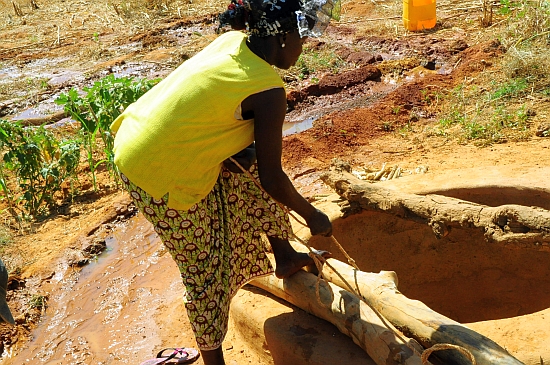Southern Africa needs better groundwater management
An estimated 39 million people living in member countries of the Southern African Development Community (SADC) are at risk of losing groundwater access during extended droughts. However, better groundwater management can help ensure sustainable supplies.

Climate change is now inescapable. That was the key message emerging from the latest report published by the Intergovernmental Panel on Climate Change (IPCC) last month. There is now a 95% certainly that our planet’s regulatory systems are being permanently altered. One likely consequence of this will be prolonged droughts in many areas. This will not only affect rainfall, but also the amount of water stored below the surface.
In the Southern African region, millions of people are dependent on groundwater for most part of the year. For many, it is the main, if not the only, source of water. Reduced rainfall for longer periods can make the region prone to groundwater drought; a condition describing a prolonged dry period when groundwater resources decline and become unavailable or inaccessible for human use.
“Absence of rain first affects the recharge of groundwater and then, consequently, storage and discharge,” says Karen Villholth, Senior Researcher – Groundwater Management, International Water Management Institute (IWMI). “This is critical because impacts might still be felt even after the drought has passed.”
Often, it is the rural communities that are most vulnerable to droughts, due to their dependence on groundwater or groundwater-fed systems for all their uses. However, so far, only little attention has been given to proper groundwater management, and the integration of groundwater into drought management in the SADC region.
Bringing change
However, this is going to change. A new study, led by IWMI in collaboration with other organizations, is helping to bring this issue to the fore.
“We see a clear need for increased efforts and capacity,” says Villholth. “This includes better knowledge, better planning and targeting of groundwater development as well as a drought-resistant water supply.”
The researchers used the spatial analysis tool, GRiMMS, which had been developed for the mapping and integrated management of groundwater and drought in the SADC region. With the use of GRiMMS, the researchers were able to map indicators of overall groundwater drought risk and determine the physical risk as well as the human vulnerability towards groundwater droughts. Using the results from the study, the researchers now hope to increase the attention on groundwater drought risk.
SADC is at risk and the risk will increase
The assessment showed that there are, indeed, certain areas within the SADC region that are relatively vulnerable to groundwater drought. It also showed that there will be a significant increase in the risk of groundwater drought under conditions of climate change.
The areas most vulnerable to physical groundwater drought are located in a broad band encompassing the southwestern part of Angola; most parts of Namibia, Botswana and Zimbabwe; northern and western parts of South Africa, continuing north through western parts of Mozambique; most of Malawi; eastern parts of Zambia; and central and northern parts of Tanzania.
Human vulnerability was shown to be highest in areas with high population, as groundwater dependence in those areas is high. The researchers conclude that, disproportionately, many people in the SADC region live in areas where there is risk of groundwater drought, and such areas are to be addressed and further prioritized in drought management.
“The best strategy to deal with groundwater drought is to understand the hydrogeological processes involved and likely impacts, identify the vulnerable areas and populations, and ensure sustained usage of the water through proactive management,” says Villholth. “It is clear that continued collaboration and awareness raising on the important role of groundwater in drought management in SADC is required.”
The study was a collaboration between IWMI, DHI GRAS, Danish Meteorological Institute and the Council for Scientific and Industrial Research (CSIR).
Villholth, K.G.; Tøttrup, C.; Stendel, M.; Maherry, A. 2013. Integrated mapping of groundwater drought risk in the Southern African Development Community (SADC) region. Hydrogeology Journal 21(4): 863-885.
[hr top=”yes”/]
About the author
Anna Deinhard is a Communications Fellow at the International Water Management Institute (IWMI).

